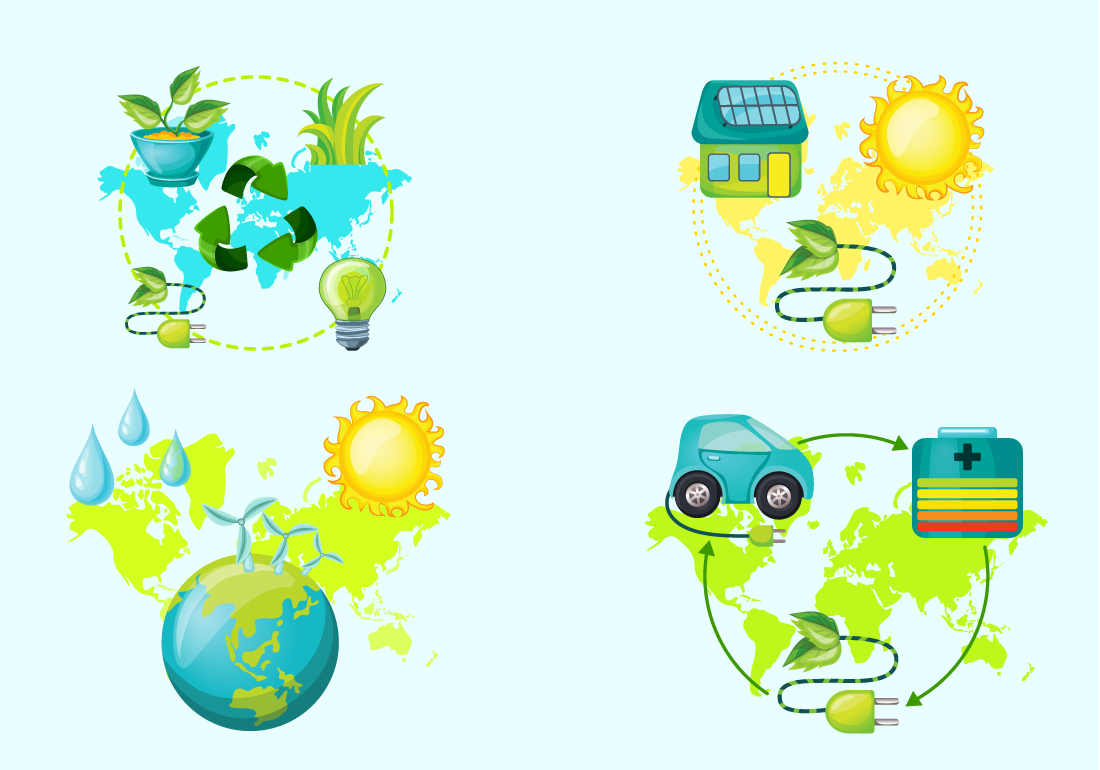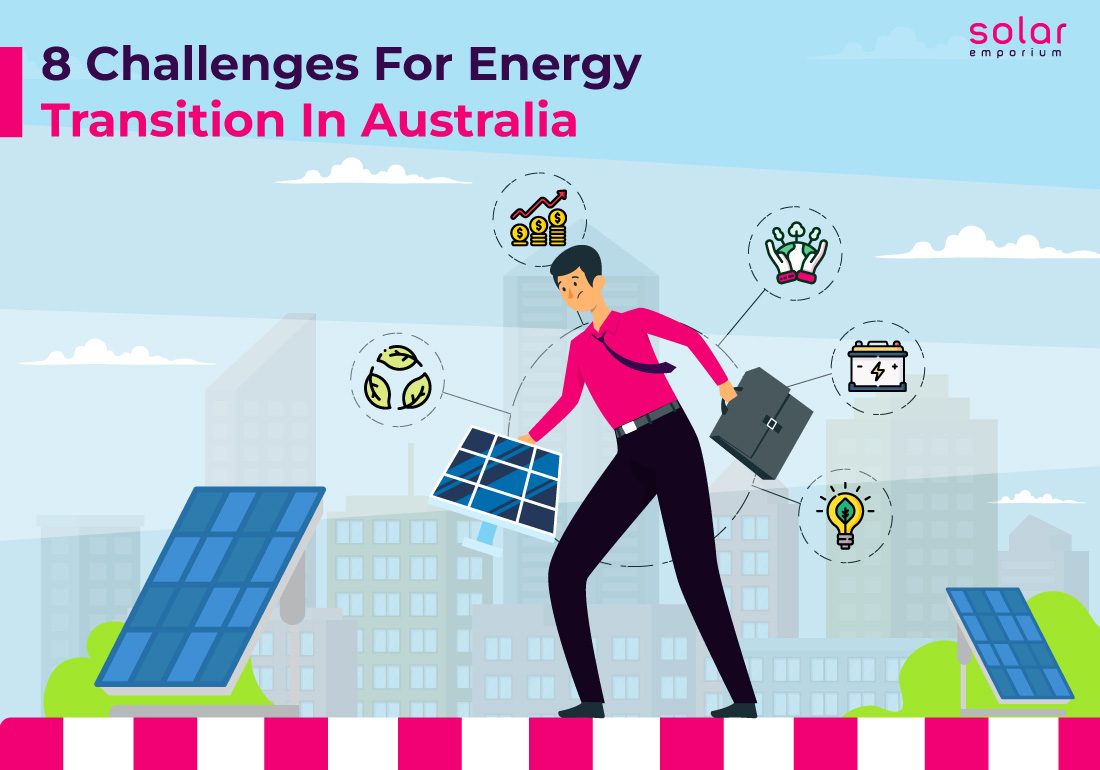Renewable energy technology is improving every day. And it’s getting more affordable. Yet, many challenges remain to incorporate renewable energy into our daily lives. As a result, renewable energy sources account for only 20% of our worldwide energy consumption.
Fortunately, we have identified 8 challenges for energy transition in Australia. Identifying the challenges is the first step toward an innovative future. And this innovation is a must to transform renewable energy from a novelty to a standard in every home.
Many individuals believe that our planet is facing an energy crisis. But the sun, which powers our planet, supplies far more energy than mankind could ever require. And that’s just one source.
Wind, solar, hydropower, geothermal, biomass, and other renewable sources are also widely available in Australia. We need to tap into these resources to meet our energy requirements properly. And to properly utilize the resources, we need to understand the challenges too.
Infrastructure Issues
The wholesale and widespread deployment of renewables to meet energy demand is critical. But, the shift will be more difficult due to the need for more reliable large-scale energy grids.
There is a vast and alarming infrastructural gap in Australia. Like other forms of infrastructure, energy infrastructure requires more funds, better maintenance, and stability to meet future demands in many locations.
As the demand for renewable energy grows, higher residential use, more electric vehicle adoption, and industrial transition become easier. But the inadequacy of many electric grid systems will become increasingly visible when large-scale renewable energy is adopted.
Initial Installation Cost
Carbon emissions are the primary contributor to global warming. Numerous efforts have been made to boost its use. However, the cost is a significant factor influencing acceptance. The high initial cost of installation is one of the roadblocks to its development.
Solar and wind energy are the most affordable of all energy sources. On the other hand, the initial installation costs of a solar power system and a gas-fired plant are vastly different.
Large-scale solar power system installation costs roughly $2,000 per kilowatt. Similarly, a small-scale home system costs roughly $3,700.
While a new gas-fired plant costs $1,000 per kW. Undoubtedly, the large margin in installation expenses is quite evident. Because of the high upfront installation costs, investors and lenders consider renewables high risk. Whereas they consider fossil fuels more acceptable for its low installation costs.

Energy Storage
One of the most discussed challenges is efficient, economical, and dependable energy storage. One of the primary issues with renewable energy generation in the past has been developing a better storage system.
Because of fluctuations in sunshine and wind, supplies are less reliable than those obtained from fossil fuels. As a result, owners require batteries to store energy for later use. And to equal out energy supply disparities.
There are also concerns about the costs of this technology. That also raises the question of sustainability.
Monopoly of the Non-renewable Energy Industry
Non-renewable energy sources account for the major share of the present energy market. This certainly adds to the difficulty. Solar, wind, and other renewable energy sources must compete with the well-established fossil fuel industry.
The government provides subsidies and other forms of support for solar energy. However, the fossil fuel industry receives even more substantial government support.
Renewable energy sources are the most effective strategy to combat climate change. But fossil fuels have long been a component of human life. As a result, it has deep roots in the country’s economy.
Project Approval
Another significant impediment is the lengthy transmission project approval procedure. Authorities evaluate whether a project should proceed and how much of its expenses can be passed through in tariffs.
While various projects have been suggested, only a few obtained approval. To support Australia’s energy target, many renewable power projects must be approved.
Policymakers and industry must agree that a “capacity market” is necessary. This capacity market would compensate those with power ready for dispatch at any time. This encourages investment in firming capacity.

Insufficient Knowledge and Awareness
People hesitate to use renewable energy technology due to insufficient knowledge and awareness. Typically, fossil fuel plants are located in densely populated areas. It employs the local community because it requires numerous people to operate.
The massive property tax from fossil fuel plants will benefit the local community.
As the world’s largest coal exporter, Australia is impeding global climate action. Since the 2015 Paris Agreement, many countries have backed renewable investment. As a result, renewable investment now outnumbers fossil fuel investment in those countries.
Lack of Legal Policies
The need for policies, subsidies, incentives, and regulations that promote renewable energy technologies impedes their widespread adoption. The renewable energy market requires clear policies and legal procedures to attract investors. The government must introduce and implement policies to strengthen the renewable energy market.
Corporate lobbying and political pressure present challenges in transitioning from the fossil fuel industry to renewable energy. This is due to the inherent reliance on fossil fuels. While the dangers of climate change have begun to impact human lives significantly.
Technical Difficulties
However, industry decarbonization is one of many challenges. Technical reasons also make reducing CO2 emissions in this arena more difficult. We can only change processes to reduce 45% of emissions from feedstocks, not fuels.
Generating the high temperatures needed for processes in target sectors is difficult using zero-carbon electricity or other alternative fuels. Significant changes would be required.
Industrial processes are highly integrated. Therefore, any change to one part of the process will have a ripple effect. This will require further changes to be made. And as manufacturing facilities have long lifespans, changing processes would be expensive.
Energy is critical to the decarbonization of industry. Decarbonizing all industrial processes in the major industrial sectors will, of course, significantly impact the energy system. Decarbonization would result in a significant increase in long-term electricity requirements.
Overcoming The Challenges
The public and private sectors must collaborate to achieve better economic outcomes, progress, cost reduction, and renewable energy development. The same thing is now required for industrial decarbonization.
The energy transition and industrial decarbonization must coexist. This is an important issue for the renewable energy sector. It will be a crucial factor in the future.
Renewable energy technologies have been increasing in Australia. This was triggered by the country’s decision to focus on the renewable energy target. The green energy industry is rapidly revolutionizing our global energy supply systems due to many innovative and disruptive breakthroughs and ideas.
This is amazing news for our planet’s sustainability and existence. We must overcome the difficulties that come our way in order to meet our energy production targets. Additionally, we must eliminate the use of dirty fossil fuels.







